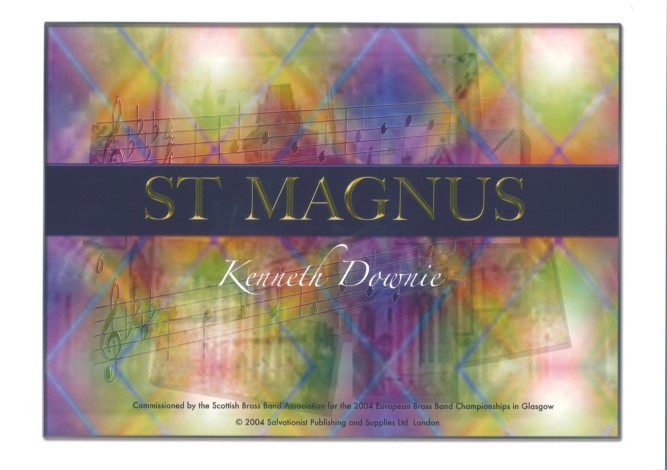Results
-
 £89.95
£89.95St Magnus (Brass Band - Score and Parts) - Downie, Kenneth
Commissioned by the Scottish Brass Band Association for the 2004 European Brass Band Championships in Glasgow. This music is a set of variations on the tune known as St Magnus, which is attributed to Jeremiah Clarke. Most people will associate it with Thomas Kelly's hymn which begins: "The Head that once was crowned with thorns is crowned with glory now". The tune is very simple, consisting of just two, four-bar phrases. Neither is there much in the way of rhythmic variety, every note being a crotchet with the exception of two quavers, and the last note in each phrase. Within such a simple structure, however, lies considerable strength.
Estimated dispatch 7-14 working days
-
 £44.95
£44.95St Magnus (Brass Band - Score only) - Downie, Kenneth
Commissioned by the Scottish Brass Band Association for the 2004 European Brass Band Championships in Glasgow. This music is a set of variations on the tune known as St Magnus, which is attributed to Jeremiah Clarke. Most people will associate it with Thomas Kelly's hymn which begins: "The Head that once was crowned with thorns is crowned with glory now". The tune is very simple, consisting of just two, four-bar phrases. Neither is there much in the way of rhythmic variety, every note being a crotchet with the exception of two quavers, and the last note in each phrase. Within such a simple structure, however, lies considerable strength.
Estimated dispatch 7-14 working days
-
£24.95
God Rest Ye Merry Gentlemen (Brass Band - Score and Parts) - Condon, Leslie
A short but interesting arrangement featuring dynamic and rhythmic contrasts.
Estimated dispatch 7-14 working days
-
£12.50
God Rest Ye Merry Gentlemen (Brass Band - Score only) - Condon, Leslie
A short but interesting arrangement featuring dynamic and rhythmic contrasts.
Estimated dispatch 7-14 working days
-
£34.95
Il Est Ne (He Is Born) (Brass Band - Score and Parts) - Norbury, Kevin
This French traditional carol has great charm and grace. This arrangement calls for rhythmic vitality, delicacy and sure-footedness.
Estimated dispatch 7-14 working days
-
£17.50
Il Est Ne (He Is Born) (Brass Band - Score only) - Norbury, Kevin
This French traditional carol has great charm and grace. This arrangement calls for rhythmic vitality, delicacy and sure-footedness.
Estimated dispatch 7-14 working days
-
£29.95
Masters In This Hall (Brass Band - Score and Parts) - Bearcroft, Norman
A highly rhythmic arrangement of a French traditional carol.
Estimated dispatch 7-14 working days
-
£14.95
Masters In This Hall (Brass Band - Score only) - Bearcroft, Norman
A highly rhythmic arrangement of a French traditional carol.
Estimated dispatch 7-14 working days
-
£34.95
The Joy-Bringer (Brass Band - Score and Parts) - Downie, Kenneth
This Festival (Concert) March was a pacesetter among 'new' Salvation Army marches of the 1960s with its refreshing harmonic language and use of Latin American rhythmic style.
Estimated dispatch 7-14 working days
-
£17.50
The Joy-Bringer (Brass Band - Score only) - Downie, Kenneth
This Festival (Concert) March was a pacesetter among 'new' Salvation Army marches of the 1960s with its refreshing harmonic language and use of Latin American rhythmic style.
Estimated dispatch 7-14 working days
